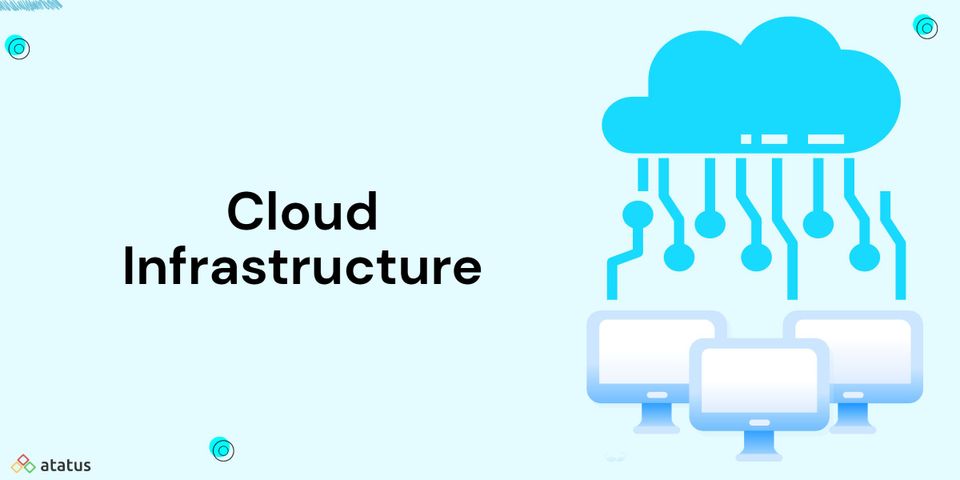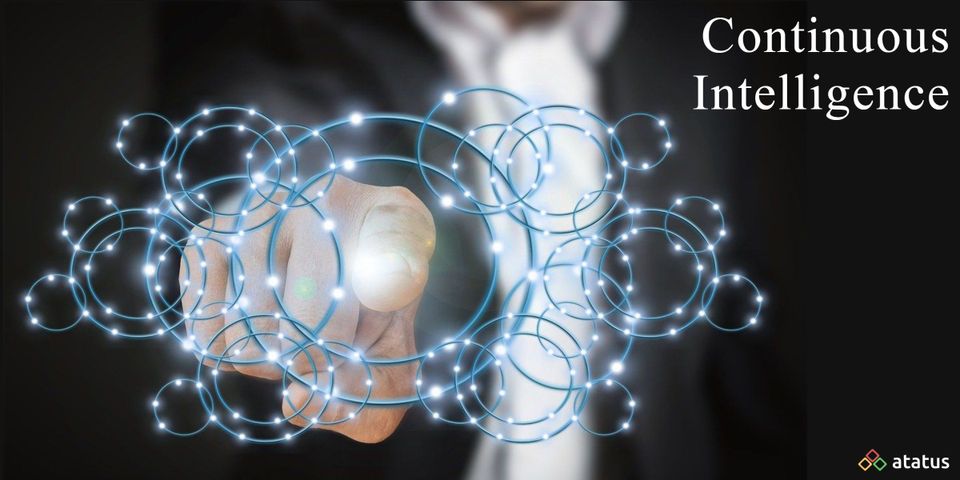In a local development environment, an engineer may make dozens of local builds that are a subset of the entire deployable unit before the feature is ready for quality assurance. Software, on the other hand, is not created in a vacuum. Individual engineers' work will eventually need to be merged into the work of the larger team. As a result, Continuous Integration was born.
We will go over the following:
- What is Continuous Integration?
- Process of Continuous Integration
- Benefits of Continuous Integration
- Challenges in Continuous Integration
- Tools for Continuous Integration
What is Continuous Integration?
The method of automating the integration of code changes from various contributors into a single software project is known as Continuous Integration (CI). It's a key DevOps best practice that allows developers to merge code changes into a common repository, from which builds and tests can be executed. Before integrating the new code, automated tools are employed to verify its validity.
The “system always runs” with continuous integration, which means it can be deployed even while under development. Small, tested vertical threads can produce value independently, which is where CI is most effectively applied to software solutions. The task is more difficult with larger, multi-platform software systems.
Each platform has its own set of technical constructions, which must be continually integrated in order to demonstrate new capability. CI is even more difficult in complex systems made up of software, hardware, components, and services offered by providers. However, the truth remains that the only practical approach to completely validate a solution is to routinely integrate and test components together.
Process of Continuous Integration
Four actions connected with continuous integration are described in Scaled Agile Framework (SAFe):
#1 Develop
The term "developing the solution" refers to the process of putting stories into action by fine-tuning features from the program backlog as needed, then coding, testing, and committing the final product to a source control system. This activity's testing focuses on the unit and story-level testing, and it frequently necessitates the use of test doubles to duplicate other components or subsystems.
The development of the solution is linked to seven practices:
- Make Stories Out of the Features – Splitting features into stories allows for small batch delivery and seamless integration. It may be necessary to create test case maps to verify that workflows are built to fulfil the needs of customers.
- Behaviour-Driven Development (BDD) – Before the code is built, product owners and teams utilize BDD to better understand requirements and enhance quality by developing acceptance criteria and acceptance tests, which are commonly automated.
- Test-Driven Development (TDD) – TDD entails first writing the unit test, then writing the bare minimum of code required to pass the test. As a result, the design is better, the quality is better, and the productivity is higher.
- Version Control – By ensuring that the proper components are integrated together, effective version control allows teams to recover swiftly from mistakes and enhance quality. A leading sign of continuous integration maturity is the collection of assets under version control.
- Built-in Quality – Flow, architecture & design quality, code quality, system quality, and release quality are all covered by built-in quality.
- Application Telemetry – Application telemetry is the key mechanism for collecting and analysing data from applications in order to establish the outcomes of relevant hypotheses.
- Threat Modelling - Potential vulnerabilities introduced into the system should be considered during system design, in addition to the threat modelling done in the architect activity of continuous exploration.
#2 Build
Teams regularly integrate new code during the build process. This can be accomplished by having the build and test tools run automatically when the code is committed. The real markers of progress are passed versus not-yet-passed and broken automated tests. Automating code development allows teams to swiftly address issues before they spread to other sections of the system.
There are five practices that can aid in the development of the solution:
- Continuous Code Integration – The compilation and testing of modifications should happen automatically after a code commit. This should happen on every commit but at the very least numerous times every day.
- Build and Test Automation – To check the modification, the compilation process, which includes unit and story-level tests, should be automated. Test doubles are frequently used in these tests to duplicate other system elements and speed up the manufacturing process.
- Trunk-based Development – Branches with a long life expectancy should be avoided. At least once a day, teams should merge back together as rapidly as possible, and all teams should operate off of a single trunk.
- Gated Commit – It's hazardous to commit to a single trunk since broken changes can affect multiple teams. Only changes that pass the build and test processes are merged into the trunk as a result.
- Application Security – Code analysis tools look for known vulnerabilities in the code and third-party packages.
#3 Test
Automated local narrative and component testing are important, but it isn't enough. System-level integration and testing are required to adequately test features. The work of all teams on the art must be often integrated with the help of the system team to ensure that the solution evolves as expected.
End-to-end system testing can be aided by the following four practices:
- Automated Testing – Functional testing, integration testing, regression testing, and other sorts of tests must be performed.
- Test Data Management – To achieve stability, tests must be consistent and realistic, as closely as feasible imitating production, and under source control.
- Service Virtualization – Different types of testing necessitate various environments. Service virtualizations enable teams to imitate a production environment without incurring the costs and time required to create and manage real-world systems.
- Testing Non-functional Requirements (NFRs) – Security, reliability, performance, maintainability, scalability, and usability of the system must all be extensively examined.
#4 Stage
Stage denotes the procedures for hosting and validating the solution in a staging environment prior to deployment.
Finally, all of the components of the solution must be tested in a staging environment using the following guidelines:
- Maintain a Staging Environment – Validation can be done in a staging environment that is similar to production.
- Blue/Green Deployment – Two environments, one live and one idle, are provided by the blue/green deployment. To deploy, a switch is flipped or a load balancer is modified, and the idle environment is transformed into the staging environment, while the other is transformed into the new idle environment. This allows for a quick transition and recovery when needed.
- System Demo – This is the meeting where the solution is validated by the stakeholders.
Benefits of Continuous Integration
Continuous integration is a key component of DevOps and high-performing software development teams. However, the benefits of CI are not restricted to the engineering team; they benefit the entire organization. CI improves transparency and visibility into the software development and delivery process. These benefits help the rest of the company design and execute better go-to-market strategies.
- Scaling
Organizations can scale their engineering teams, codebases, and infrastructure with CI. CI aids DevOps and agile operations by reducing code integration bureaucracy and communication overhead. It enables each team member to take ownership of a new code change from conception to completion. - Availability
The availability of a build refers to its ability to scale to meet the demands of the concurrent builds required by a team, as well as its ability to be recreated. More processing power is required for modern containerized builds than just creating the application binary. Distributed build systems increase the availability of those builds. - Make the Feedback Loop Better
Another powerful side effect of CI is faster feedback on business choices. With an improved CI infrastructure, product teams can test concepts and iterate product designs more quickly. Changes may be pushed through quickly and monitored for success. Bugs and other concerns can be addressed and fixed quickly. - Installation and Adoption
The most difficult aspects of continuous integration are team adoption and early technological setup. If a team doesn't already have a CI solution in place, selecting one and getting started can be difficult. When constructing a CI pipeline, it is necessary to take into account the current engineering infrastructure. - Improve Communication
CI improves total engineering communication and accountability in a DevOps team, allowing for more collaboration between development and operations. Developers get passive knowledge sharing by introducing pull request protocols related to CI. Developers can use pull requests to look at and comment on other team members' code. As features progress through the CI Pipeline, developers may now observe and collaborate on feature branches with other developers.
Challenges in Continuous Integration
Expanding the capabilities of Continuous Integration solutions can be difficult because builds and release candidates closely follow changes in development technology, such as new languages, packaging, and testing paradigms.
- CI Platforms are being Overstretched into CD
Though enterprises rapidly recognize that failing a build due to failed unit tests is not the same as managing numerous deployments and release strategies, a failed deployment might leave a system in an unusable state. The rigor required to build and test the infrastructure and application together while maintaining a safe release plan, such as a canary release, necessitates codifying tribal knowledge about application pass/fail scenarios. The cost of adding new applications might be significant, and it can go against best practices for Continuous Integration, such as keeping the build fast. - Scaling Platforms
Due to the extreme high computing needs, the infrastructure required to run a distributed Continuous Integration platform might be as complicated as the applications they are developing. Distributed build runners are one area that can be difficult to manage; as new build nodes are spun up and down, the platform/end-user can play a role. - Keeping Up with Technology's Speed
For more rigid/legacy Continuous Integration solutions that were developed for a restricted selection of technologies, incorporating new technologies in a heterogeneous build or embracing new testing paradigms can be problematic. In terms of being created for what existed in the enterprise at the time the platform was built, continuous integration systems might be prone to rigidity.
Tools for Continuous Integration
The following are our top seven recommendations for the finest continuous integration tools for your project:
- Jenkins – It's a server-based continuous integration application written in Java that runs on a web server.
- CircleCI – This tool simplifies automated testing, development, and deployment.
- TeamCity – You can run parallel builds at the same time with TeamCity, mark your builds, and discover the ones that are stuck.
- Bamboo – It allows you to automatically create new branches and merge them after testing.
- TravisCI – This tool provides a wide range of CI automation possibilities.
- Buddy – This tool was created for interacting with Bitbucket and GitHub code repositories in projects.
- GitLab CI – This tool identifies areas in the development process that need to be improved.
Conclusion
If your company is trying to implement a DevOps strategy or simply has a large software development team, CI is critical. It will assist your technical team in completing tasks more quickly and efficiently. In today's high-efficiency software development organizations, CI is a standard feature.
Monitor Your Entire Application with Atatus
Atatus provides a set of performance measurement tools to monitor and improve the performance of your frontend, backends, logs and infrastructure applications in real-time. Our platform can capture millions of performance data points from your applications, allowing you to quickly resolve issues and ensure digital customer experiences.

Atatus can be beneficial to your business, which provides a comprehensive view of your application, including how it works, where performance bottlenecks exist, which users are most impacted, and which errors break your code for your frontend, backend, and infrastructure.





